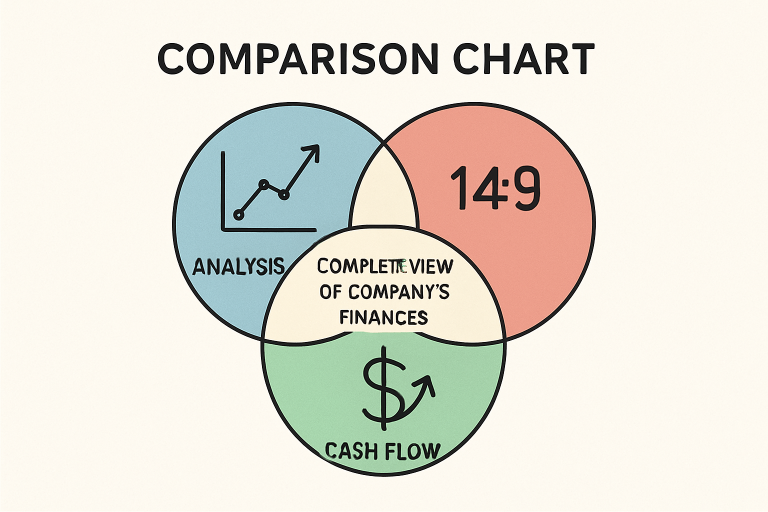
Key Takeaways:
- Understanding various financial analysis methods enhances decision-making.
- Each method offers unique insights into a company's financial health.
- Combining multiple approaches provides a comprehensive financial overview.
The landscape of modern business relies heavily on data-driven decision-making, making financial analysis a crucial tool for organizations seeking to remain competitive. Financial analysis is the process of evaluating a company’s financial statements and related data to determine its overall performance and identify emerging trends. Business leaders, investors, and analysts depend on robust financial analysis to support strategies ranging from investment choices to internal operational improvements.
At its core, financial analysis reveals answers to critical questions—Is the business growing? Are profit margins sustainable? Can current assets cover liabilities? By analyzing historical data, benchmarking against market peers, and forecasting future performance, these methods provide a solid foundation for effective risk management and long-term planning. As financial landscapes become more complex, leveraging diverse methodologies is increasingly necessary to capture every facet of organizational well-being.
Financial analysis enables stakeholders to evaluate not only past and present performance but also a company’s resilience and adaptability in a rapidly changing marketplace. Approaching financial data from multiple perspectives reduces blind spots and helps organizations adapt to unpredictable economic shifts and evolving industry standards.
While the fundamentals of financial analysis remain unchanged, innovations in technology and methodology continue to advance the discipline. In this article, we explore the most common and modern approaches, examine their strengths and limitations, and highlight the benefits of combining different financial analysis techniques to obtain a truly comprehensive view.

Common Financial Analysis Methods
Businesses employ a range of financial analysis techniques, each providing distinct insights into an organization’s performance and potential. The most frequently used methods include:
- Horizontal Analysis: This trend-focused method examines financial data over several periods, making it easy to spot long-term patterns in revenues, expenses, and profitability.
- Vertical Analysis: By restating line items as percentages of a base figure (such as sales or total assets), vertical analysis facilitates side-by-side comparisons between companies of varying sizes or across departments within the same company.
- Ratio Analysis: Ratio analysis distills complex financial data into key performance indicators, including liquidity ratios like current and quick ratios, profitability ratios like return on equity (ROE), and solvency ratios such as debt-to-equity.
- Discounted Cash Flow (DCF): A forward-looking technique, DCF estimates the present value of an investment based on expected future cash flows, taking into account the time value of money.
- Economic Value Added (EVA): EVA measures whether a company is truly generating value above the required rate of return for its investors, taking into account capital costs and highlighting economic profit rather than mere accounting profit.
Comparing DCF and EVA Methods
Two of the most widely discussed approaches in financial valuation are DCF and EVA, each addressing value from a unique perspective. DCF is lauded for its practicality and focus on future cash flows, making it a staple for investment managers and acquisition specialists. It offers a dynamic, forward-looking mechanism directly tied to the time value of money and risk assessment.
EVA, meanwhile, is more granular, measuring economic profit by subtracting a company’s cost of capital from its net operating profit after taxes. While theoretically robust, EVA is sometimes underutilized, especially among small to mid-sized enterprises due to its complexity and data requirements. Practitioners often favor DCF for its speed and ease of application, but may overlook valuable insights that EVA offers regarding true economic profitability and capital efficiency. A comprehensive comparison by the International Journal of Applied Economics, Finance and Accounting highlights these differences and discusses how both methods can serve different strategic purposes.
Integrating Financial Ratios with EVA
Traditional financial ratios are a mainstay in quick company health assessments, but on their own, they sometimes paint an incomplete picture. When integrated with EVA, these ratios help illuminate the specific drivers behind value creation and destruction within an organization. For example, a company may have strong profitability ratios. Still, if its EVA is negative, it reveals that actual wealth creation is not occurring after accounting for the opportunity cost of invested capital.
Research comparing financial ratios with EVA consistently underscores the benefits of integration. Ratios provide fast, actionable insights into short-term trends, while EVA uncovers deeper, sustainable performance.
Modern Techniques in Financial Analysis
Technological innovations and advanced statistical approaches are revolutionizing financial analysis. The Compositional Data (CoDa) methodology stands out as a powerful alternative to conventional ratio analysis. By recognizing the interdependence among financial statement components, CoDa addresses long-standing issues such as skewness, collinearity, and the impact of outliers, improving reliability in cross-company and cross-industry comparisons.
The proliferation of big data and predictive analytics is another pivotal trend. Firms are increasingly leveraging machine learning to uncover patterns and automate risk assessments, resulting in more intelligent, efficient, and accurate financial analysis processes.
Challenges in Financial Analysis
Despite a wealth of analytical tools, significant challenges persist in deriving actionable insights from financial data. Data complexity, inconsistent reporting standards, and unpredictable market environments can hinder analysis accuracy. The need for precise forecasting, integration of non-financial data, and adaptations to regulatory changes further complicate matters. As a result, continuing education and a flexible mindset are crucial for today’s financial professionals.
Embracing new analytical frameworks and technologies can offer solutions, but these come with their own learning curves and implementation challenges. Success in financial analysis ultimately relies on a strong foundational understanding of methodology, rigorous data validation, and an openness to evolving best practices.
Conclusion
Mastery of multiple financial analysis methods is essential for accurate company valuation and strategic decision-making. Leveraging both traditional and modern techniques enables organizations to navigate complexities, identify new opportunities, and mitigate risk. By embracing a comparative and integrated approach, financial analysts can ensure their insights are as comprehensive and actionable as possible.
